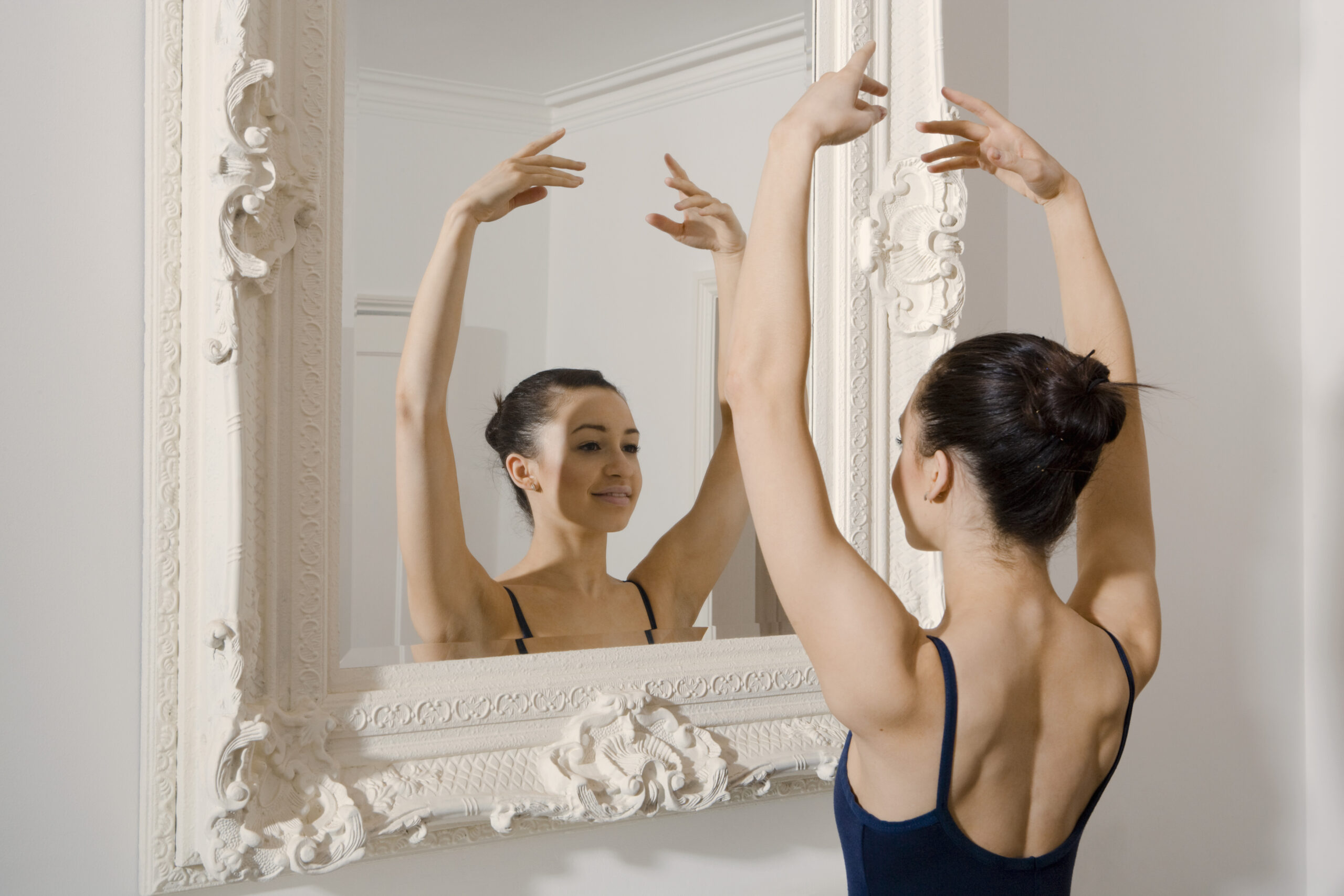
Confidence is an important part of a dancer’s success. But for many dancers, industry pressures and body ideals often cultivate a narrative that is overwhelmed with self-judgment, ridicule and dissatisfaction.
In fact, body weight surveillance has a detrimental impact on a dancer’s health. A 2018 study suggests that in addition to mirror usage and dancewear restrictions, a teacher’s influence represents a key factor in a dancer’s risk for body dissatisfaction. Also, fears about whether to broach the topic can mean missed opportunities to identify dancers at risk for body dysmorphia and disordered eating.
Dance educators are the front line—and for clinicians like me, they can play a critical role not only in identifying dancers who might be struggling, but also in shifting the studio narrative from self-judgment to self-acceptance. Here are three tips to start modeling a supportive body image to foster confident dancers at your studio.
Listen Without Judgment
Foster a safe space with a listening ear. Remember that body image reflects one’s beliefs towards their body—it encompasses how a dancer sees themselves in the mirror and how they imagine themselves to look at any moment. A dancer’s body image is often constructed over time as a narrative that takes shape from the various messages and experiences of life. Until professional support, such as from a dietitian or therapist, is received, educators will likely be the ones to listen and respond to their dancer’s body comments. Without judgment or criticism, remind your dancers that their feelings are valid and behaviors like restrictive dieting will only drive them further away from building confidence and a more supportive body image.
Model Appreciation and Neutrality
Body confidence is a journey, not a destination. Even for the seasoned dancer or dance educator, a self-narrative needs constant reevaluation and reshaping. Shifting your focus from how your body looks to what your body is capable of can help. Given the physicality of the artform, many dancers can identify the ways in which their bodies show up for them both inside the studio and out. This can be especially helpful when it comes to corrections. Try affirmations like “Our legs give us the power to jump!” or “Artistry comes from within, not from our body weight, shape or size.” Ultimately, these statements can help to shift the studio conversation into one that is more productive.
Offer Resources
It’s not uncommon for body image support to either be misunderstood or misdirected. Body acceptance can feel unattainable for those struggling to feel confident, and the work to build resilience against triggering content is a challenge with today’s overabundant media landscape.
Dance educators are a key player in a dancer’s journey in building a more supportive body image, but this role can feel overwhelming without help. Offering resources, such as those from licensed professionals (like registered dietitian nutritionists and mental health therapists) is always encouraged.





